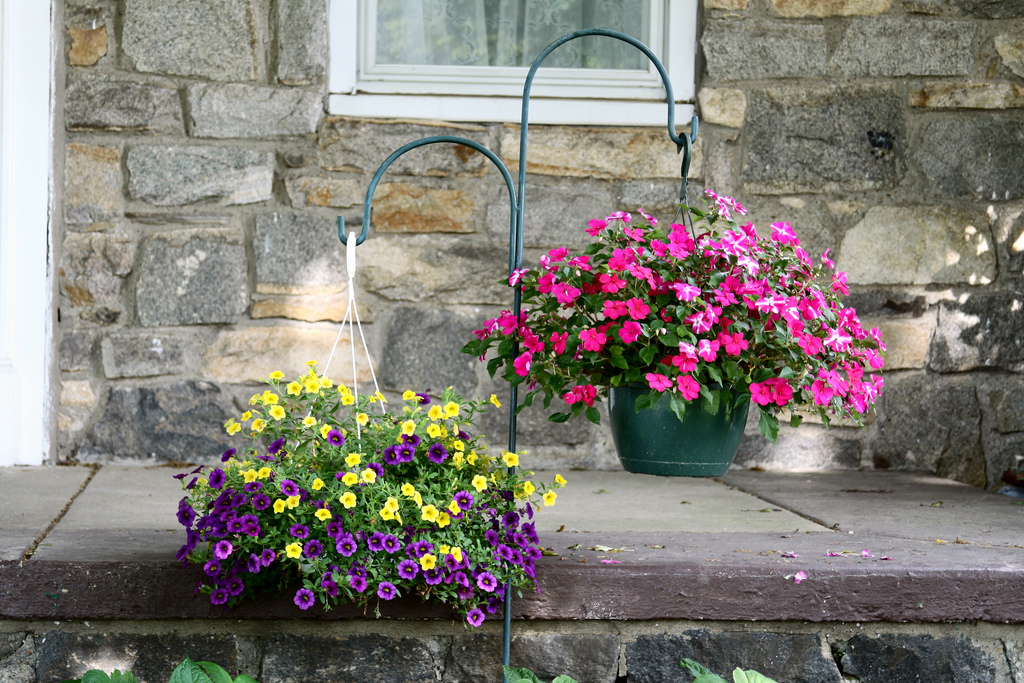Over the past month, The Great Big Greenhouse and Meadows Farms Nursery have sold thousands of hanging baskets. Blooming hanging baskets are a staple for adding color to decks, patios, porches, and balconies. Although they are an instant way to add color to our outdoor space, they do require a bit of care to stay looking good all season long. Keep in mind about “right hanging basket / right location. There are many types of hanging baskets and some require full sun and others may require partial shade. Here are some key care tips to keep these baskets performing up to your expectations.
WATERING
Proper watering is probably the most important factor in hanging basket care. There are a lot of plants and roots contained within a relatively small soil volume which means baskets can dry out very quickly on hot summer days. You want to water thoroughly when the top surface feels dry and/or the weight of the basket feels light. You want to water slowly until the excess water starts coming out of the drain holes. When this happens you know that you have totally saturated the soil. For hanging baskets in full sun, they may require being watered every other day. Just use your finger to touch the top of the soil.
FERTILIZING
With any plants planted in some form of container, the volume of soil is limited by the size of the container – in this case, a hanging basket. These plants compete for nutrients, so properly fertilizing baskets is crucial for success. Many hanging baskets already have the time release Osmocote fertilizer sprinkled on top of the soil. There are many high-quality fertilizers that are ideal to use in hanging baskets. Ideally, use a fertilizer that has a higher middle number. The middle number represents phosphate. Phosphate is needed for root structure and blossom setting. I would recommend fertilizing hanging baskets once every couple to three weeks. The fertilizer that we use to care for our hanging baskets on the selling floor is Jack’s 20-20-20.
PRUNING
The third component of a beautiful, healthy hanging basket has to do with maintenance. I am referring to the term “dead-heading”. Petunias and verbena are two plants that particularly need to have their spent blooms removed to stay looking their best. After a couple of months, most hanging baskets can benefit by having a haircut. With a haircut, the baskets will be invigorated with more branching and flowers and will give you a full, fresh look.
Now, many people go on vacation in the summer. Hanging baskets cannot be neglected for a very long time and expect to survive. Some people will have someone take care of their plants while away. One possible trick is to take down the hanging baskets and put on the ground. You could even bury the pot into some mulch in order to shade and protect the soil and roots from drying out so fast. Be sure to thoroughly water the hanging basket(s) the morning before leaving.
Follow these 3 simple steps and you will have beautiful hanging baskets all summer long.
HAPPY GARDENING!!!!

